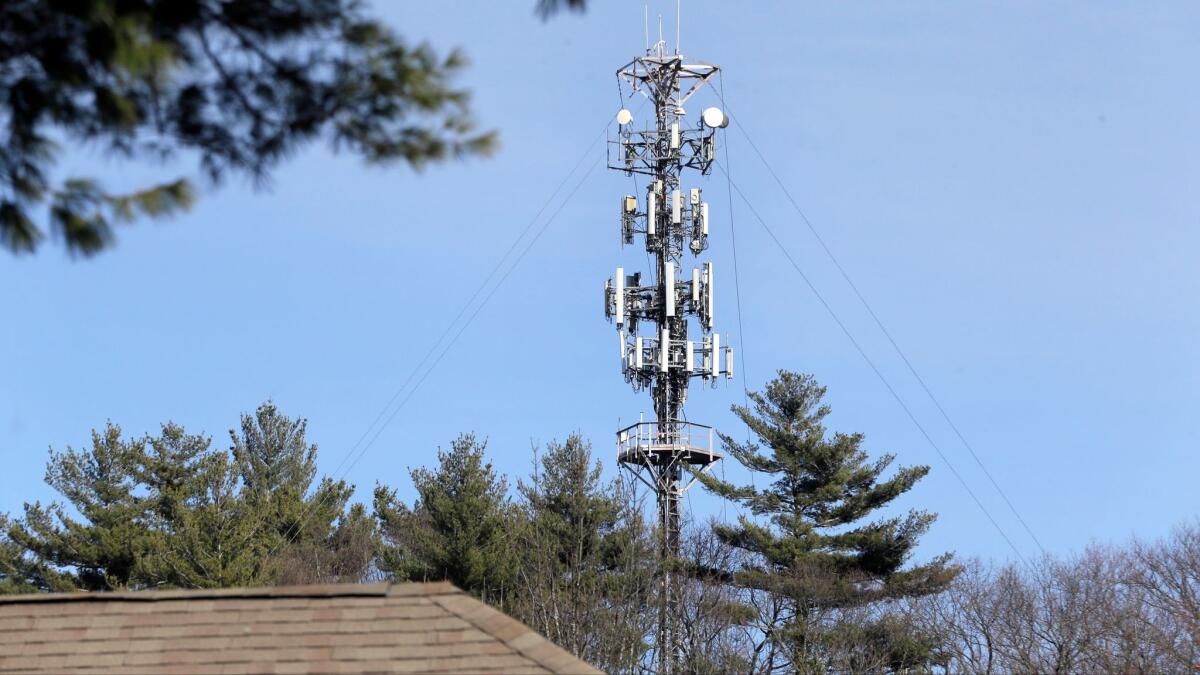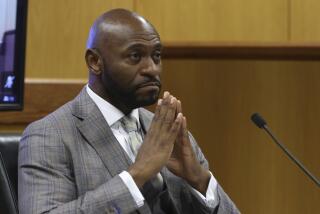Insurers keep denying claims by using — or maybe misusing — cellphone-tower data

- Share via
It took Jaclyn Bentley nearly three years to prove she didn’t burn her house down for the insurance money, allegations she and her lawyer say were born of the junk practice of analyzing cellphone-tower data.
She was camping with her husband and co-workers at least 17 miles from her Iowa home in May 2014 when the house burned down, she says. An investigator for State Farm Fire and Casualty Co. said cell-tower data showed Bentley’s phone was 5 to 12 miles from the campsite in the direction of her home just after the fire was reported — the suggestion being she could have been heading back to camp after starting the blaze.
Her claim was denied, and she was arrested on arson and insurance fraud charges. But she was acquitted after questioning State Farm’s analysis of the tower data, and she has a lawsuit pending against the company for failing to pay her claim.
Despite acquittals such as Bentley’s and expert testimony that cellphone-tower data should not be used to pinpoint people’s locations, insurance companies continue to use the information to deny claims by casting doubt that customers were where they said they were.
The problem, experts say, is that a cellphone can be up to 20 miles away when it “pings,” or connects with, a tower.
“I’ve gone through hell,” said Bentley, 37, of Clinton, Iowa, who cares for people with brain injuries and mental illness. “It’s ridiculous what happened. You’re innocent until proven guilty. I’ve never felt like I was treated like I was innocent. As far as the insurance company was concerned, I was guilty.”
State Farm does not comment on pending litigation or specific claims, spokesman Justin Tomczak said.
“We handle each claim on its merits and conduct a diligent investigation to determine what we owe under the policy,” he said. “That work can include many things, including phone records, that become pertinent to completing our investigation. While I cannot comment on a specific claim, I can tell you that we rarely obtain phone records.”
The records can be obtained only by a court order or a customer’s consent.
A private investigator, Tim Wilcox, chief executive of International Investigators Inc. in Indianapolis, said he believes cell-tower data analysis can be fairly accurate in tracking someone’s movements, within half a mile. He said the information is just one of many pieces of evidence needed for a strong fraud case.
Michael Cherry has testified in successful cases to free people who were imprisoned based in part on cell-tower evidence. Among the early design team members of the Apollo 11 moon trip, Cherry is now chief executive of Cherry Biometrics, a computer and cellphone data analysis firm in Falls Church, Va.
Phones can be miles away when they ping towers, Cherry said, because calls are not simply routed to the nearest cell tower or to the cell tower with the strongest signal. Rather, a number of factors decide which tower handles the call, including which has the clearest signal and is the most cost effective, he said.
“They’re misinterpreting it, and it’s not very reliable to begin with,” said Cherry, who played no role in Bentley’s case.
Bentley, who spent three days in jail — including her birthday — after being arrested, said the insurance company claimed cellphones can be only up to 3 or 4 miles away when they ping towers. But she was able to disprove that claim with her cellphone records.
Hours after the fire was out and she had returned to the campground, she checked her voicemail and her phone pinged a tower near the campground. A few minutes later, her mother called her, and her phone pinged a tower back in Clinton, 17 miles away. Minutes later, her husband called her, and her phone pinged a tower about 20 miles away, she said.
That information, she believes, resulted in the verdict of not guilty.
A couple Cherry is helping — Monica and Ali Almazni of Perris, Calif. — are facing trial in April on insurance fraud charges, stemming from the theft of their car in 2013. Their insurer, Progressive, said that before the car was reported stolen, the Almaznis’ cellphones pinged a tower near where the car was later found.
The Almaznis say that Progressive’s take on the cellphone data is wrong, and that they didn’t stage the theft to get the insurance money. Cherry said the couple could have been where they said they were — Ali Almazni at a mall where the car was stolen, and his wife at home — based on the tower information.
Jeff Sibel, a spokesman for Progressive, said the company collects a variety of information when investigating insurance claims. He said he would check into the Almaznis’ case and provide a response, but he did not follow up with the Associated Press.
Another California couple, Linda and Eric Norwood of Hemet, said they gave up on pursuing an insurance claim for their stolen pickup after State Farm used cell-tower information to insinuate they were involved. They said they couldn’t afford a lawyer to try to fight State Farm, and no criminal charges were filed against them.
Tomczak, the State Farm spokesman, declined to discuss the case.
More to Read
Inside the business of entertainment
The Wide Shot brings you news, analysis and insights on everything from streaming wars to production — and what it all means for the future.
You may occasionally receive promotional content from the Los Angeles Times.










